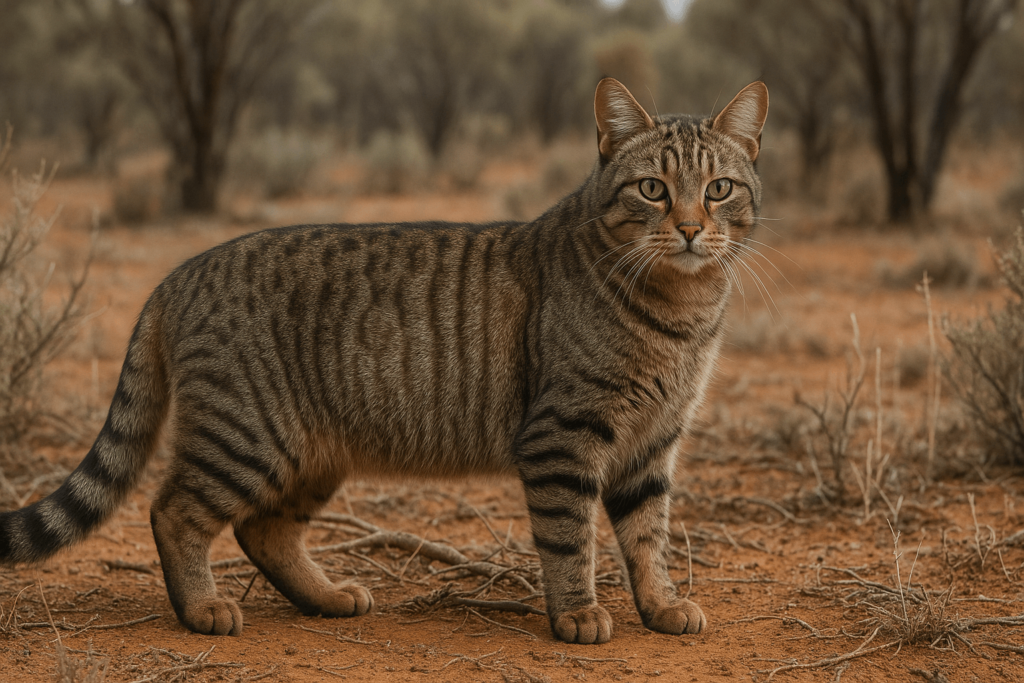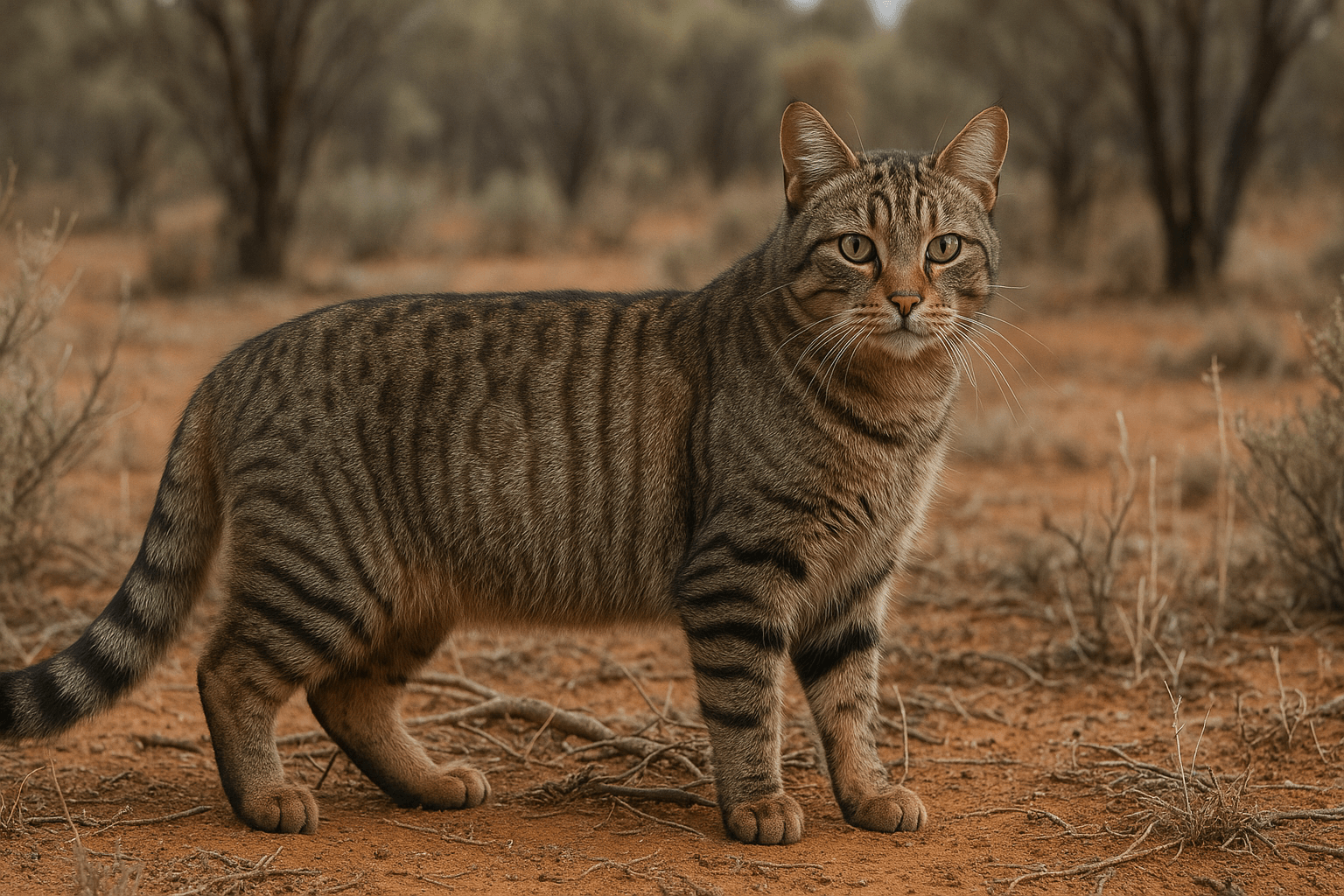Australian Feral Cat Size: Unveiling the Facts
Feral cats in Australia have long been a subject of fascination and concern due to their impact on native wildlife and ecosystems. These untamed felines, thriving without human intervention, exhibit unique physical traits that set them apart from domesticated cats. One key aspect of understanding their ecological role is examining their size—how big do Australian feral cats grow, and what factors influence their dimensions? This blog post delves into the average size range of these elusive predators, exploring how genetics, diet, and environment shape their physical characteristics. By uncovering these details, we can better grasp their adaptability and the challenges they pose to Australia’s biodiversity.
Factors Influencing the Size of Australian Feral Cats
The size of Australian feral cats varies significantly based on environmental and biological influences. These factors play a crucial role in determining their growth and survival capabilities in the wild.
Dietary Habits:
Feral cats primarily feed on small mammals, birds, reptiles, and insects. A protein-rich diet contributes to lean muscle mass and overall body size.Geographic Location:
Cats in remote areas may grow larger due to less competition for resources, while those in densely populated regions might remain smaller.Genetic Diversity:
The genetic makeup of feral cat populations varies across Australia, leading to differences in size and physical traits.Climate and Habitat:
Harsh desert climates may result in smaller, more agile cats, while temperate regions might support larger-bodied individuals.Availability of Prey:
Areas abundant in prey allow feral cats to thrive and grow larger, whereas scarce food sources can lead to stunted growth.
These factors highlight the adaptability of feral cats and their ability to survive in diverse Australian landscapes.

Average Size Range of Australian Feral Cats
Understanding the typical size range of Australian feral cats provides insight into their physical capabilities and ecological impact. Here’s a breakdown of their dimensions and weight.
Body Length:
On average, feral cats measure between 45–70 cm (18–28 inches) from nose to tail base.Tail Length:
Their tails add an additional 20–30 cm (8–12 inches), aiding balance during hunting and climbing.Weight Range:
Most feral cats weigh between 3–6 kg (6.6–13.2 lbs), though some exceptionally large individuals may exceed this range.Height at Shoulder:
Standing approximately 25–30 cm (10–12 inches) tall, they are agile and well-suited for stealthy movement.Sexual Dimorphism:
Male feral cats tend to be slightly larger and heavier than females, reflecting natural gender-based differences.
This size range reflects the adaptability of feral cats to Australia’s varied environments, making them efficient hunters and survivors.
Check this guide 👉Feral Cat vs Stray Cat: Best 7 Expert Tips!
Check this guide 👉How to Get a Feral Cat to Trust You: Best 7 Expert Tips!
Check this guide 👉How to Catch a Stray Cat: Best 7 Expert Tips!
Characteristics of Feral Cats | Impact on Native Wildlife |
Average weight: 3–6 kg | Predation on small mammals and birds |
Agile hunters with sharp reflexes | Threat to endangered species |
Adapted to harsh climates | Thrive in diverse ecosystems |
Opportunistic feeders | Disrupt food chains |
High reproductive rates | Rapid population growth increases impact |
How Feral Cats Compare to Domestic Cats
While feral and domestic cats share a common ancestry, their lifestyles and environments lead to noticeable differences in size and behavior. Comparing the two sheds light on their unique adaptations.
Muscle Development:
Feral cats typically have leaner, more muscular builds due to constant hunting and survival challenges.Size Variations:
Domestic cats may grow larger due to consistent access to food, while feral cats rely on unpredictable prey availability.Behavioral Differences:
Feral cats exhibit heightened alertness and agility compared to their more relaxed domestic counterparts.Life Expectancy:
Domestic cats live longer due to veterinary care and safe environments, while feral cats face shorter lifespans due to predators and harsh conditions.Reproductive Rates:
Both groups reproduce prolifically, but feral cats often produce more offspring to compensate for high mortality rates.
These comparisons underscore how environment shapes the physical and behavioral traits of feral and domestic cats.
Conservation Challenges Posed by Feral Cats
Feral cats pose significant threats to Australia’s fragile ecosystems, particularly to native wildlife. Addressing these challenges requires understanding their role in habitat disruption.
Predation Pressure:
Feral cats hunt indiscriminately, targeting vulnerable species like marsupials, birds, and reptiles.Competition with Native Predators:
By preying on shared resources, feral cats compete with native predators such as quolls and raptors.Spread of Disease:
Feral cats can carry diseases that threaten both wildlife and livestock, complicating conservation efforts.Ecosystem Imbalance:
Their presence disrupts food webs, leading to declines in biodiversity and ecosystem health.Difficulty in Control:
Eradicating feral cat populations is challenging due to their adaptability and elusive nature.
These challenges emphasize the urgent need for effective management strategies to protect Australia’s unique biodiversity.
Behavioral Traits of Feral Cats
Feral cats exhibit unique behaviors shaped by their wild existence. These traits distinguish them from domesticated felines and highlight their survival instincts.
Nocturnal Hunting Patterns:
Feral cats are primarily active at night, using darkness to stalk and ambush prey effectively.Territorial Behavior:
They establish and defend territories, often marking boundaries with scent glands.Solitary Nature:
Unlike domestic cats, feral cats rarely form social groups and prefer solitary lifestyles.Adaptation to Scarcity:
When food is scarce, feral cats can survive for extended periods without eating, conserving energy efficiently.High Alertness Levels:
Constant vigilance helps them avoid predators and detect potential threats quickly.
These behaviors showcase the resourcefulness and independence of feral cats in the wild.
Physical Adaptations of Feral Cats
Feral cats possess remarkable physical adaptations that enable them to thrive in Australia’s challenging environments. These traits enhance their survival capabilities.
Keen Senses:
Exceptional hearing and night vision allow feral cats to locate prey even in low-light conditions.Agile Bodies:
Their flexible spines and strong legs facilitate quick movements and precise leaps during hunts.Camouflage Fur Patterns:
Mottled coats provide excellent camouflage, helping them blend into various terrains.Sharp Claws and Teeth:
Designed for hunting, their claws and teeth are highly effective tools for capturing and killing prey.Efficient Digestion:
Feral cats extract maximum nutrients from their food, ensuring optimal energy levels despite irregular meals.
These adaptations demonstrate how feral cats have evolved to excel as apex predators in the wild.
Public Awareness and Education Efforts
Raising awareness about feral cats is crucial for fostering community involvement in conservation initiatives. Educating the public helps build support for managing their populations responsibly.
Community Workshops:
Hosting workshops teaches residents about the impacts of feral cats and humane control methods.School Programs:
Incorporating feral cat education into school curriculums inspires younger generations to care for native wildlife.Media Campaigns:
Documentaries and social media campaigns raise visibility and encourage action against feral cat proliferation.Volunteer Opportunities:
Engaging volunteers in trapping and monitoring programs fosters hands-on participation in conservation efforts.Collaboration with Experts:
Partnering with scientists and wildlife organizations ensures evidence-based approaches to feral cat management.
Through education and collaboration, communities can work together to address the challenges posed by feral cats sustainably.
Frequently Asked Questions About Australian Feral Cats
How big do Australian feral cats get?
Most feral cats weigh between 3–6 kg (6.6–13.2 lbs) and measure 45–70 cm (18–28 inches) in body length.
Are feral cats larger than domestic cats?
Not necessarily; feral cats are often leaner and more muscular, but domestic cats may grow larger due to consistent nutrition.
Why are feral cats a threat to wildlife?
They prey on native animals, many of which are already endangered, disrupting ecosystems and food chains.
Can feral cats survive in all Australian climates?
Yes, their adaptability allows them to thrive in deserts, forests, grasslands, and urban areas.
What is being done to control feral cat populations?
Strategies include trapping, baiting, and creating predator-free zones to protect native species.
Understanding the Role of Feral Cats in Australia’s Ecosystem
The size and adaptability of Australian feral cats make them formidable hunters capable of thriving in diverse environments. While their physical traits reflect their resilience, their impact on native wildlife underscores the importance of addressing the challenges they pose. By studying their behavior, size, and ecological role, we can develop informed strategies to mitigate their effects and protect Australia’s unique biodiversity. Whether viewed as adaptable survivors or ecological threats, feral cats remain a complex and fascinating part of Australia’s natural landscape.
Canned Pumpkin for Cat Diarrhea: Best 7 Expert Tips! Natural remedy to firm stools, soothe upset bellies, and support gut health safely.
Can a Cat Give You Scabies? Best 7 Expert Tips! Discover the truth about feline mites, human skin risks, and how to protect yourself—without panic.
Cat Flea vs Human Flea: Best 7 Expert Tips! Discover the truth about bites, species, and how to eliminate infestations for good.
Weird Cat Behaviors: Best 7 Expert Tips! Discover why cats do strange things—and how to understand, not punish, their instincts for a happier home.





